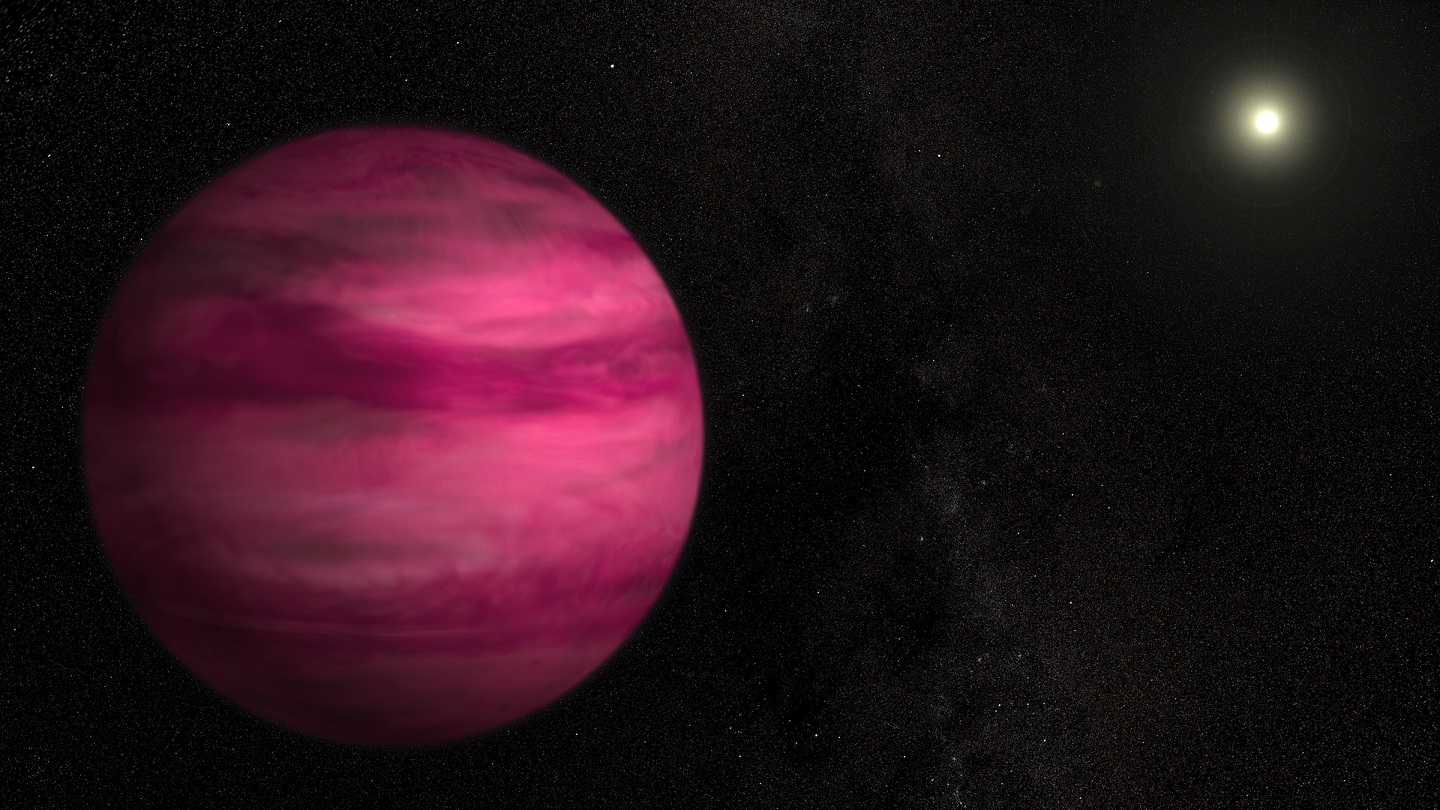Which worlds might be watching us?
A new list of exoplanets that can see the Earth is ‘a little uncomfortable’, an astrophysicist acknowledges
Kharishar Kahfi • December 22, 2021

The thought that exoplanets, like GJ 504b pictured here, can spot Earth transiting the sun might help humans seek out worlds outside the solar system. [Credit: NASA's Goddard Space Flight Center/S. Wiessinger | Public domain]
Humans have looked up to the sky for ages and asked, “What stars can we see?” Now two astronomers have dared to reverse the question, asking: “Which stars, and possible planets revolving around them, can see us?”
The answer, according to astrophysicist Jackie Faherty, is that there are more than 2,000 stars that have had “the stadium seating position” to look towards the Earth as it passes around our sun.
About “1,400 of them are staring at us right now,” said Faherty, a senior scientist and educator at the American Museum of Natural History (AMNH) in New York. Meanwhile, the remaining stars have seen us in the past or will be able to observe us in the future.
It’s enough to send shivers down your spine, Faherty confessed after speaking recently at AMNH about the results of a Nature paper she co-authored on the topic with Cornell University astronomer Lisa Kaltenegger.
As they compiled the list of nearby stars, “I felt like I was being watched; [It was] a little uncomfortable,” Faherty said, adding: “We felt exposed … especially considering that we had stared at some of these stars for a significant amount of time.”
For years, astronomers have been looking for planets beyond our solar system using various methods, such as using a telescope to look directly around a star. But this is not an efficient way, Faherty says, to find exoplanets — as these worlds outside the solar system are called — since most are far too small and dim to be observed from Earth.
An alternative, indirect method is to look at a star and see whether there are planetary objects “transiting” between the star and the observer, slightly dimming the starlight. Faherty and Kaltenegger reversed this method to identify stars within 300 light years, from which Earth could be seen transiting the sun. The list of stars is derived from the European Space Agency’s Gaia star chart.
Some of these stars, Faherty said, have already been identified as having at least one orbiting planet. One example is Ross 128, a red dwarf star in the Virgo constellation, and the nearby Earth-sized planet, Ross 128 b.
“This world would have watched the Earth for just over 2,000 years, from 3057 B.C. until 900 B.C.,” she added.
The list can help other missions to find habitable planets, says astrophysicist Jessie Christiansen of the California Institute of Technology, who was not involved in the study. One example is the James Webb Space Telescope, which is slated to be launched this December after repeated delays. One of the telescope’s missions is to look for exoplanets located in stars’ habitable zones, according to a statement from NASA.
The time period for an exoplanet transiting a star is relatively short compared to the time humans spent collecting data on stars and planets across the universe, Christiansen says. “I think this study produced a useful list of places to concentrate our efforts on, while we’re waiting for the technology [to take pictures of planets orbiting stars] to mature,” she adds.
Like Faherty, Christiansen also confessed to feeling a bit creeped out by seeing the new list of nearby stars. “I go back and forth, to be honest,” she said. “What would be more terrifying: that we aren’t alone, or that we are?”
After Faherty’s museum talk, some audience members were excited by the possibility of other worlds watching the Earth: “Beam the message! Let them find us!” one person said. But others rejected the idea, citing their fear of being destroyed by aliens.
Nevertheless, astronomers like Faherty are preparing themselves for the possibility of interacting with extraterrestrial life, perhaps from one of the exoplanets on Faherty and Kaltenegger’s list. While Faherty wants to ask the aliens the meaning of life, Christiansen said she would probably apologize to them for the chaotic state of Earth and would “ask them to hold on a moment until we sorted ourselves out and were fit for company!”
We might not have the option of asking aliens to hold off on contacting us, however. Faherty and Kaltenegger found that radio waves created by humans have already swept past 75 stars on their list.
So, who knows: Someone may radio us back soon.